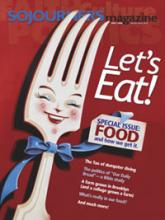Wander into Brooklyn’s Red Hook neighborhood on a Saturday morning in summer and you’ll see a sight not uncommon in New York City these days: a thriving and well-diversified farmers market.
Neighborhood denizens cluster around stands offering free-range meat, raw-milk cheese, cream-on-top milk, and a whole array of fresh fruit and vegetables—many of them grown right down the block from the market.
Yet unlike most of New York’s bustling greenmarkets, which tend to thrive in upscale residential and shopping areas, this one lies in one of the city’s poorest neighborhoods. Red Hook’s median family income is $15,000—below the federal poverty line of $19,000. Forty percent of the neighborhood’s families live on less than $10,000 per year. The unemployment rate for 16- to 19-year-olds stands at 75 percent.
In fact, not many outsiders wander into Red Hook. When New York City’s legendary city planner Robert Moses patched together plans for the Brooklyn-Queens Expressway in the 1940s, he decided to spare aristocratic Brooklyn Heights and its stately brownstones, sending the BQE along the waterfront at that point. Just south, though, he let the road slice right into working-class Red Hook, leaving it shoehorned between a traffic-choked highway on one side and New York Harbor on the other.
Read the Full Article
